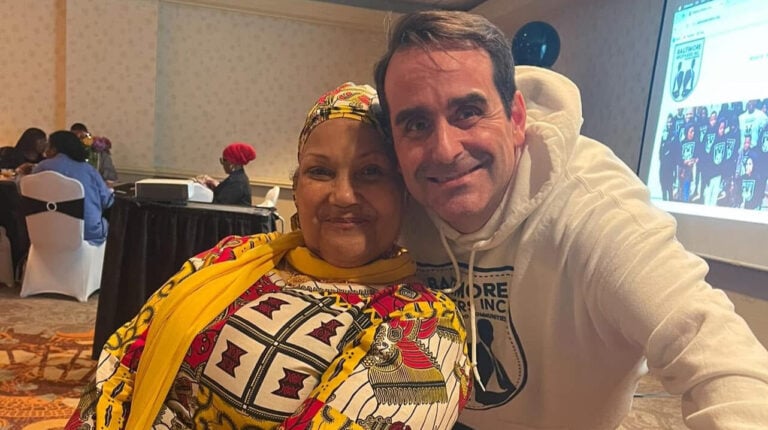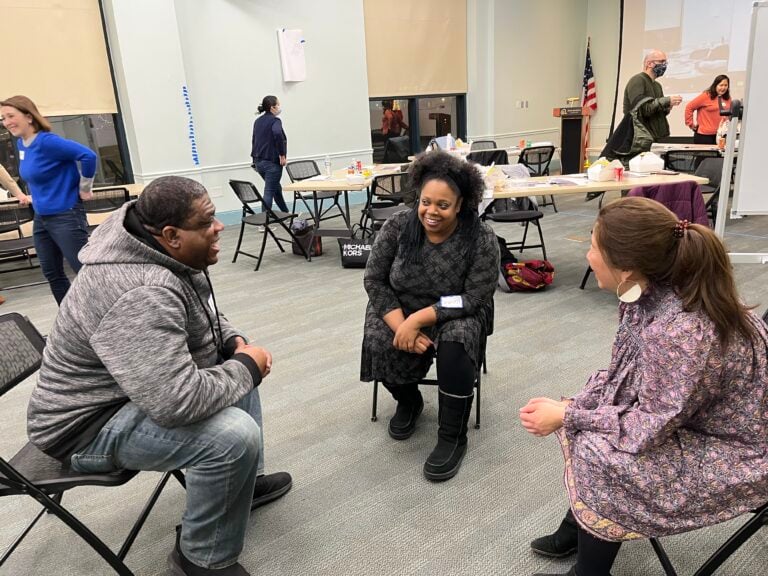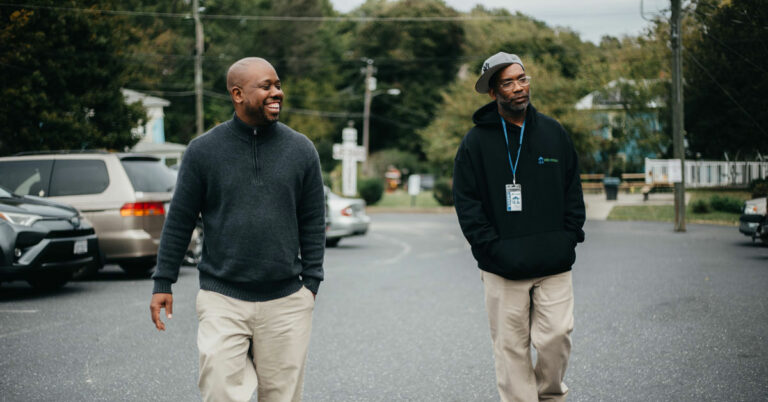Explaining the Elmina B. Sewall Foundation’s decision to publish its first annual report in 2020, executive director Gabriela Alcalde said in a video introduction: “We’re beginning to recognize the power that philanthropy holds and bringing accountability to that power.”
The foundation, which had been making grants since 2009, mostly in Maine, was beginning to embrace a new approach to grantmaking, one that, according to the report, is driven by the belief that for equity to be possible, “power must be decentralized from philanthropic institutions to communities through intentional, planned efforts.”
Since then, those efforts have included switching from mostly one-year grants to mostly multiyear grants — a more “power-aware position,” according to Alcalde, which, in turn, led to the practice of passing multiyear budgets. Sewall also committed to new sets of principles around equity, the values of trust-based philanthropy, and operating practices rooted in community, learning, and justice, and it adopted a new governance framework meant to decentralize power internally. In 2021, the foundation conducted its first open call for board members in order to attract more diversity and broader community representation.
In line with its commitment to “elevating voices,” Sewall also took a deeper dive into the communities it serves. In its Lewiston-Auburn program, which supports nonprofits in those twin cities, the foundation convened more than 80 organizations for a systems-mapping process to identify the area’s strengths, needs, and priorities. In its Wabanaki Communities and Tribal Governments focus area, Sewall has met one-on-one and in group sessions with dozens of Indigenous community members and leaders, producing a report that says, “We envision a near future when all funders listen first to community voices.”
Fund for Shared Insight asked Alcalde, Sewall’s chief executive since 2019, about the changes at the foundation, what it means for a funder to “listen deeply,” and why switching to a participatory approach to grantmaking is not always a foundation’s decision to make.
In my experience with funders, even really lovely people with good intentions have a tendency to already have an idea in their mind when they approach communities, nonprofits, or grassroots coalitions, so listening isn’t really happening. They come with preconceived notions and plans and want to import those into communities regardless of where they were developed. I believe Sewall from very early on, before my time, had an understanding that those leading the work know best what needs to be done and that it’s important to pull it back even closer so ideas and solutions come from the ground up, not the other way. Those in the community know what the challenges and opportunities are in that community and what can and should be done.
My belief is that philanthropy is quite distant from the community in general. For us, working with the community generally means working with nonprofit partners who serve and are located within communities. We have done work beyond that, but primarily we work to connect to those most proximal to the community without leapfrogging them. It’s a matter of respecting our nonprofit partners, not jumping over them to go into communities, but working with them because they are the connectors and they can lead us further into the community, if that’s appropriate at the time.
First, I’d say that centering community is a process, one we are committed to and that moves at different speeds in different aspects of our work. To your question, that is something we did face in a way. In one of our program areas, we thought we should go to participatory grantmaking because we wanted to show we were serious about yielding some power. But community members and folks at nonprofits in the community said to us that the community was not there yet and if we move too quickly towards that it might actually harm some of the relationships and trust building the foundation was doing and groups in the community were doing among themselves. So again, very good intentions on our part. We were trying to live into our values by pursuing participatory grantmaking. But the community said, “Maybe not right now. We definitely want to get there, but we want to move there with you.” That’s the type of feedback that makes us really committed to pausing and listening and asking questions. Any time we make an assumption [about what the community wants], I feel it’s disrespectful to our community partners, our nonprofit partners and it’s definitely not going to build trust.
The framework serves as a vehicle for us to work toward equity. It makes us more aware of the power dynamics and provides vehicles for thinking about power and equity in an organized way and throughout everything we do — our culture, leadership, structures, and practices. We need to pay attention to each of those areas of our work to make sure we are always putting our mission first, which means putting community first.
Those are things we have tried to be very aware of and careful about. When we started our listening sessions in the Indigenous communities program area, we worked with consultants, including an Indigenous researcher, to make sure we were engaging in a culturally humble way. And we made the listening session very fluid dialogues, really sharing about ourselves, too, because often what we forget in the philanthropic world is that relationships are not a one-way street. You can’t just seek information, vulnerability, and openness without giving those things yourself. I participated in those conversations and we always started out by locating ourselves. For me, I am an immigrant, a woman of color. I would share some of that and the biases that come with that and my relationship with Indigeneity, as well. In doing that, in focusing on the relational, the mutual aspect of it, we had conversations where people shared vulnerable information that we wouldn’t have gotten if we had just done an interview or said we are here to get the five priorities of your community.
When a funder invites grantees or community members, we need to be clear about what our expectations are. Listening requires transparency so there’s understanding around why am I listening, what assumptions I have, and what am I going to do with the information I learn. There’s a mutuality to it, even though the term listening might sound one-sided. For it to be effective listening it has to be reciprocal, we both share. Following the conversations [through the Indigenous communities program area], we sent to each person who participated a transcript of what we heard them say and we didn’t finalize a report until we heard back from everyone. Feedback is critical. We were acknowledging that the information we gathered is the property of those who shared it. A lot of organizations, inside and outside philanthropy, don’t go there.
In Lewiston-Auburn – our most in-depth community engagement work – we learned that we needed to change the whole framing of our work there. We started that effort thinking we’re going to ask the community what they think Sewall should do. Then, once we’d gone through two years of conversations, we were looking at it and realized, this is not meant to be our plan at all, this is the community’s plan and we are just a tiny part of it. We reframed it and changed our language. It was conceived as a full plan for partnering with Lewiston-Auburn, but shifted to being the Lewiston-Auburn community plan and Sewall is just one of the supporters. We see our job now as proactively collaborating with other funders to support the community’s priorities, how they established them and how they want to address them.
The fact that we brought in six new people, most of whom didn’t know the continuing board members or each other made us be more explicit about who we are and what we all want. It’s exciting because it’s the most diverse board we’ve ever had; geographically, racially, ethnically, age-wise, experiences. And that enriches every conversation. It has injected new perspectives and the new people raise questions we wouldn’t have asked because we’ve been inside of it.
Readiness is really important and the process of community engagement is just as important as the results. The idea of consent is also important when engaging with community. Engaging is not running over people, just jumping in and saying, “We insist that we have your opinion about this.” When you’re working with communities that have been underrepresented, are more vulnerable, have less resources, it’s important to take time to think it through, asking, Why are you doing this, how are you doing this, and what do you hope to accomplish with it? And you must be ready to be transparent, humble and vulnerable yourself.







